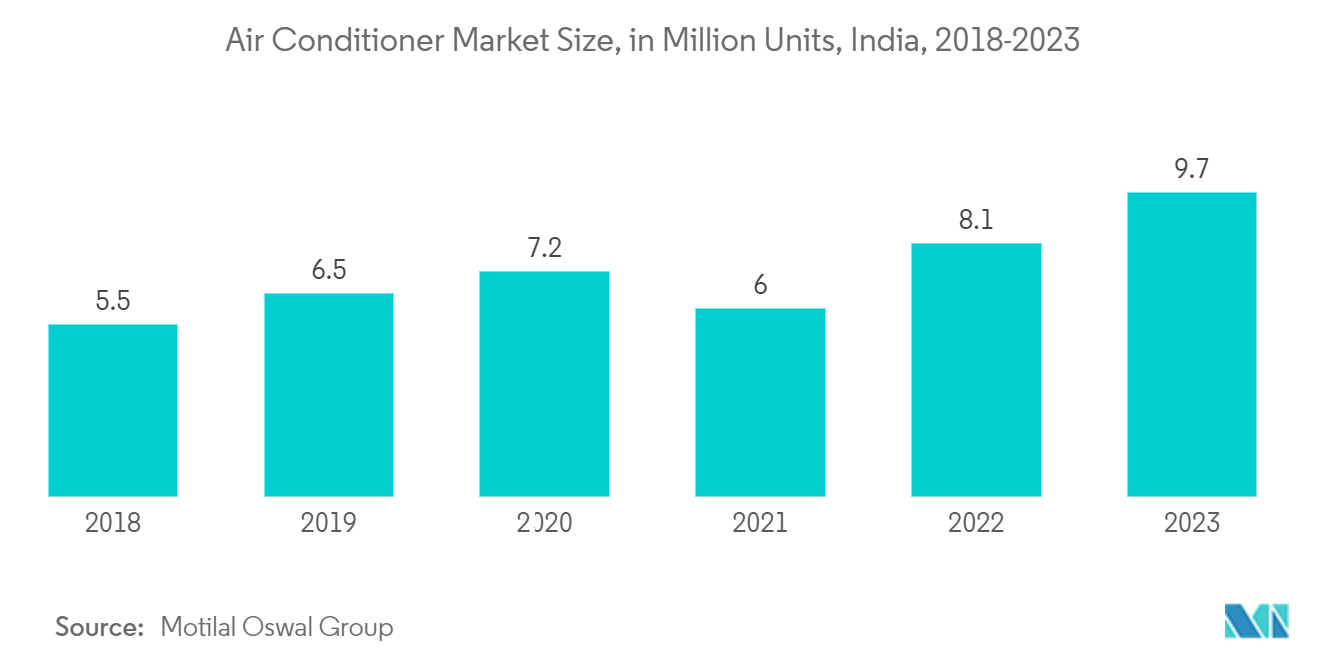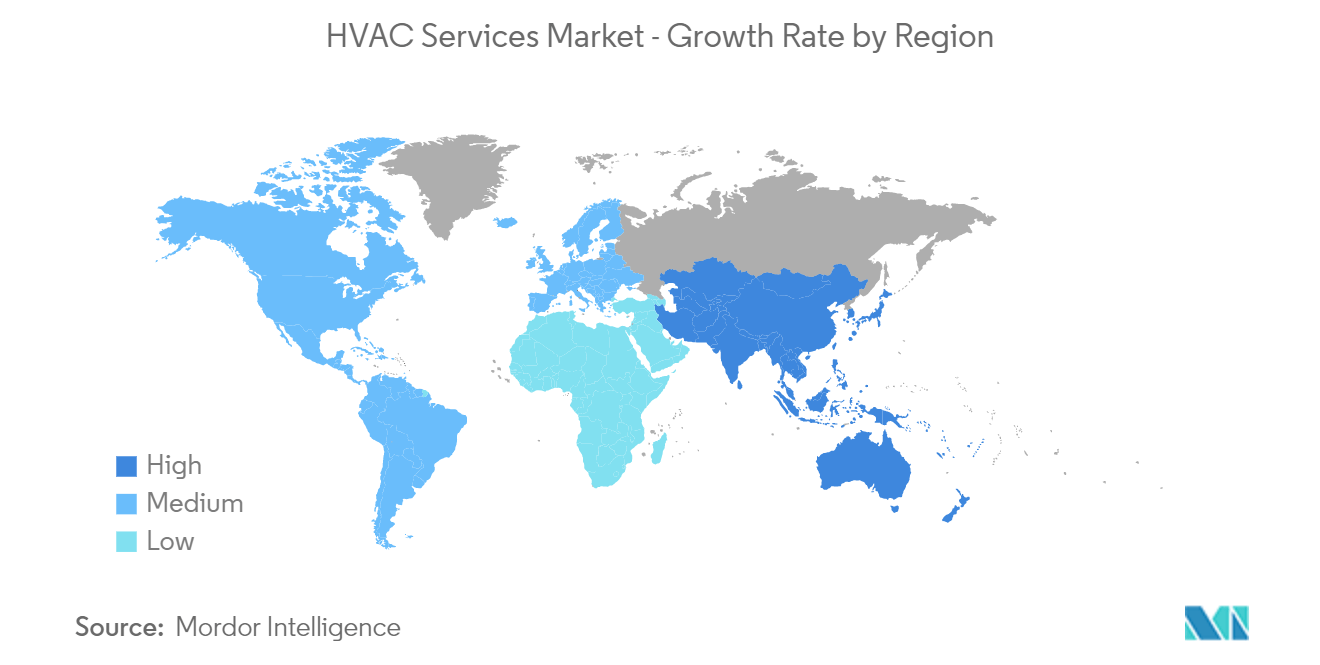Market Trends of HVAC Services Industry
This section covers the major market trends shaping the HVAC Services Market according to our research experts:
Residential Segment is Expected to Register Significant Growth
- The HVAC services need in the residential sector are mainly due to the growing population in the world, thereby leading to new installations. The market in developed regions, like Europe and North America, is primarily from the maintenance and replacement services. Further, as of October 2022, China's population stood at 1.45 billion, followed by India, with residents of 1.38 billion.
- With rising global temperatures and enhancing living standards, market penetration for A/C systems is expected to grow substantially from current levels in developing nations. Also, amidst the global financial crisis and housing market collapse, an overhang of housing in many mature economies led to a breakdown in the costs of existing homes and stifled the latest residential construction spending.
- According to JRAIA, the global demand for room air conditioners has increased to 95.16 million in recent years. Furthermore, according to Motilal Oswal Group, increasing demand for home appliances and a reasonably low penetration rate has left the Indian air conditioner market with plenty of room to grow and is estimated to reach 9.7 million units in the financial year 2023.
- Moreover, investments by the government sector in new building construction and smart infrastructure can also drive the demand for HVAC services. According to the U.S. census bureau, US new home construction in March 2022 was around 68,000 units, or 3.9% higher than in March 2021. Further, 622,000 building permits for multifamily housing units were granted in the United States in 2021, compared with 492,000 over the previous twelve months.
- For instance, in April 2022, Daikin announced its support for the REPowerEU, which has set a goal to boost the rollout of heat pumps from 10 million units in 2027 to 30 million units in 2030. This is further associated with residential decarbonization as the movement can help the European Union achieve the residential sector's decarbonization goals by 2050. Various HVAC services vendors are further supporting such initiatives.
- According to an Aeroseal report, irregular speed heat pumps can reduce monthly homeowner costs by up to 40%. On its own, proper building or home insulation can improve HVAC efficiencies by up to 30%.

United States to Experience Significant Market Growth
- Growing government support, in the form of higher budget allocations, designed to increase homeownership and sustainable community development, and the increasing housing affordability in the country, may contribute to the ever-growing residential construction sector. In addition, increased construction activities, rapid urbanization, infrastructural reforms, and HVAC unit replacements are some of the major factors supporting the growth of the HVAC services market in the country.
- According to IEA, more than 90% of households in the United States have air conditioning equipment, compared to just 8% of the 2.8 billion people living in the hottest parts of the world. The growing use of air conditioners in homes and offices around the U.S. will be one of the top drivers stressing the need for HVAC services in the region.
- Furthermore, brownfield and greenfield opportunities for the new and existing building stock are also anticipated to significantly aid the market growth during the forecast period. Further, the Biden plan to build modern, sustainable infrastructure and an equitable clean energy future to put the United States on an irreversible path to achieve net-zero emissions, economy-wide, by no later than 2050. A large part of the overall Biden plan is to make commercial buildings (especially aging buildings) more energy efficient. The plan calls for an upgrade of 4 million commercial facilities in the United States. Energy efficiency measures touted by the Biden administration as part of their plan include installing LED lighting, electrical appliances, and advanced heating and cooling systems. The plan also comprises investment in “energy upgrades” for homes, offices, warehouses, and public buildings.
- The HVAC Industry is moving towards smart technologies in the United States, as the region is witnessing a high level of IoT integrations. State policies and regulations also govern the demand for HVAC services in the country. For instance, according to Aeroseal, LLC, in the northern U.S., furnaces must have a 90% efficiency rating, but in southern states, only an 80% efficiency rating is required. This indicates that the HVAC services industry tends to be fueled by local and regional regulations.
- According to the US EIA Residential Energy Consumption Survey (RECS), 76 million primarily occupied US homes (64% of the total) use central air-conditioning equipment. Heat pumps are used for heating or cooling in approximately 13 million homes (11%). By 2023, all new residential central air-conditioning and air-source heat pump systems sold in the United States will be demanded to meet new energy efficiency standards, fueling the growth of HVAC services.

